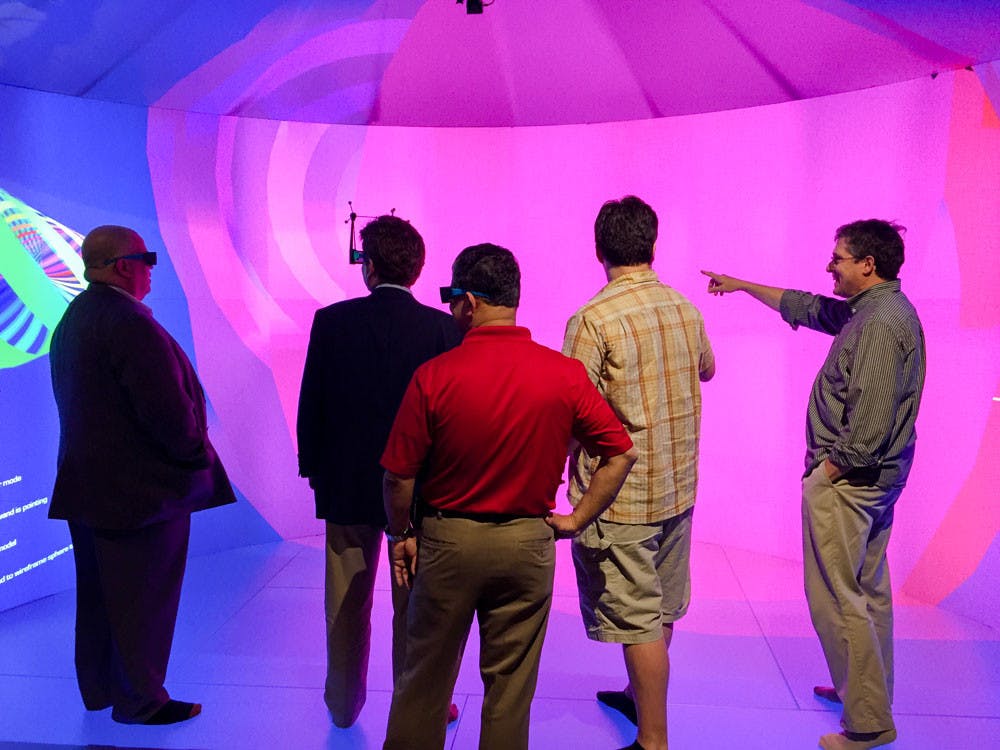Adam Blumenthal, adjunct associate professor of the practice of computer science and virtual reality artist-in-residence, has been working with a team of students to create a virtual reality educational experience about the Gaspee Affair, a maritime attack that preceded the Revolutionary War. The work began when Blumenthal led a Group Independent Study Project with 14 students in the spring, and some have continued working on the project with hopes of releasing an alternative way of teaching high school history as soon as next year.
The team sees virtual reality as a way to immerse students in learning. In a 2016 Gallup Poll, about a third of American high school students claimed that they were engaged with school while the remaining two-thirds responded they were either “not engaged” or “actively disengaged” with school.
“Virtual reality is very engaging medium,” Blumenthal said. “It’s a great way to deliver an experience as compelling as a video game and, at the same time, deliver learning outcomes for middle school and high school students.”
Aside from the event’s exciting nature with cannon fire and gunshots, Blumenthal said he decided to focus on the Gaspee Affair due to its significance to the people of Providence. “The story is also very little-known outside of Rhode Island, but was very important in terms of the way that it helped unite the colonies towards the cause of independence,” Blumenthal said, adding that he hopes the Gaspee Project will elevate the story’s publicity on a national level.
The Gaspee Project features an interactive virtual exhibit with a collection of items related to different aspects of the Gaspee Affair. Interacting with these objects transports the user to different parts of the virtual experience. For example, one part of the experience involves a small model of the Gaspee, a British ship, on a table. When a user picks up the model, they are transported to Gaspee Point, the site of the event, with the ability to see and experience the burning of the Gaspee.
Hannah Seckendorf ’20, a student on the team, said that users are also given the opportunity to teleport onto the ship’s deck. “That’s one of the powerful things about virtual reality,” she said. “It allows you to view the event through all the different perspectives involved, depending on where you are standing and experiencing the virtual space.”
Brown has been committed to the development and research of virtual reality since the 1990s and now has multiple labs on campus dedicated to the technology. David Laidlaw, professor of computer science, has been a central figure of this initiative in recent years. His class, CSCI 1370: “Virtual Reality Design for Science,” gives students an opportunity to design interactive experiences using the virtual reality facilities on campus.
“The class focuses on developing good tools for scientists to understand things they don’t understand in big data sets,” Laidlaw said. “Its goal is also for students to understand what (virtual reality) can do, understanding its strengths and weaknesses in communication, education, science and so on. Over time, students learn subtle yet valuable lessons about the medium.”
Though the upward trajectory that virtual reality has experienced in both popularity and development is encouraging for all those involved with this technology, there are still concerns about its potential to impact the masses and change the way we live.
“Virtual reality is very much still in its infancy,” said Jarod Boone ’20, another student involved with the Gaspee Project. “Aside from the logistical and technical problems that are still present in (virtual reality), there is still a cultural shift that needs to happen for people to be more accepting of (virtual reality).”
While its success in education or other fields remains to be seen, there is a general consensus among all those involved in the project about the engaging facets of virtual reality.
“There’s a magic in (virtual reality), and it’s subtle,” Laidlaw said. “I don’t understand it, but we can recognize it when we see it. That’s my favorite part about (virtual reality).”





